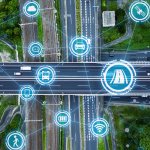For decades, supply chain control towers functioned primarily as passive monitoring tools, offering visibility but limited responsiveness. Recent global disruptions, ranging from the Red Sea crisis to pandemic-induced supply chain shocks, have pushed companies to reimagine control towers as real-time nerve centers, not just for tracking shipments but for dynamically managing everything from routing to supplier engagement.
Dynamic Risk Monitoring and Real-Time Routing
Modern control towers are now integrating live data feeds, including port congestion, weather patterns, and geopolitical developments, to facilitate immediate and informed routing decisions. For instance, during the Red Sea crisis, Maersk rerouted its vessels around the Cape of Good Hope, a decision informed by real-time risk assessments.
This strategic move, while increasing transit times, was essential to ensure crew safety and cargo security. Maersk anticipates that such rerouting could impact its earnings before interest and taxes (EBIT) by up to $3 billion if the Red Sea remains closed throughout 2025 .
For Walmart, the power of real-time risk monitoring has meant the difference between continuity and disruption. By incorporating weather forecasts and traffic data into its control tower, the retail giant has been able to decide, on the same day, whether to move goods by rail, truckload, or even air freight. This dynamic routing capability has become essential in an environment where delays can cascade into lost sales and market share.
Strategic Priorities for Logistics Leaders
- Supply Chain Stress Testing: Logistics leaders should move beyond static scenario libraries and routinely stress-test control tower decision models with real-world data. This means collaborating with risk analysts to simulate rolling disruptions, like sequential port strikes or dual-source failures, before they occur. Such iterative testing builds confidence in decision logic and uncovers hidden vulnerabilities that standard scenario libraries may overlook.
- Collaborative Data Governance: Rather than treating data integration as a one-off IT project, logistics leaders should create shared governance frameworks with key suppliers and third-party logistics providers. This involves formal agreements on data definitions, update frequencies, and data-sharing protocols. By co-owning data integrity, firms can reduce latency in decision-making and avoid the pitfalls of siloed visibility.
- Commercial Impacts Modeling: Beyond routing and scheduling, control towers should be connected to financial and commercial impact models. Companies can integrate control tower alerts with real-time revenue, margin, and customer demand signals. This alignment ensures that rerouting or escalation decisions don’t just maintain delivery KPIs—they actively protect or grow profitability.
- Supplier Collaboration Signals: Logistics leaders often overlook the value of integrating supplier health and collaboration signals into control tower workflows. Building in real-time supplier performance data, like production disruptions or capacity thresholds, enables proactive load balancing and sourcing reallocation. This shift moves control towers from reactive logistics to anticipatory supplier risk management.
- Behavioral Analytics for Crisis Response: Companies should consider using behavioral analytics to refine how teams respond to control tower escalations under stress. Tracking decision latency and error rates during past disruptions can reveal cognitive biases or training gaps that slow down crisis response. Investing in behavioral insights can turn control towers into not just digital but also human performance accelerators.
From Observation to Orchestration
The evolution of supply chain control towers reflects a fundamental shift in how logistics leaders manage risk and volatility. Moving beyond static dashboards, these systems are becoming active nerve centers by combining live data, commercial insight, and human judgment to guide decisions in real time.
What emerges is a new blueprint for control tower value – one that integrates real-time risk assessments with operational execution, financial alignment, and proactive supplier management. In this model, control towers are not just digital sentinels, they are integral parts of enterprise-wide resilience and adaptability. In an era of rolling disruptions, this ability to pivot quickly and precisely will set apart those who lead from those who follow.





